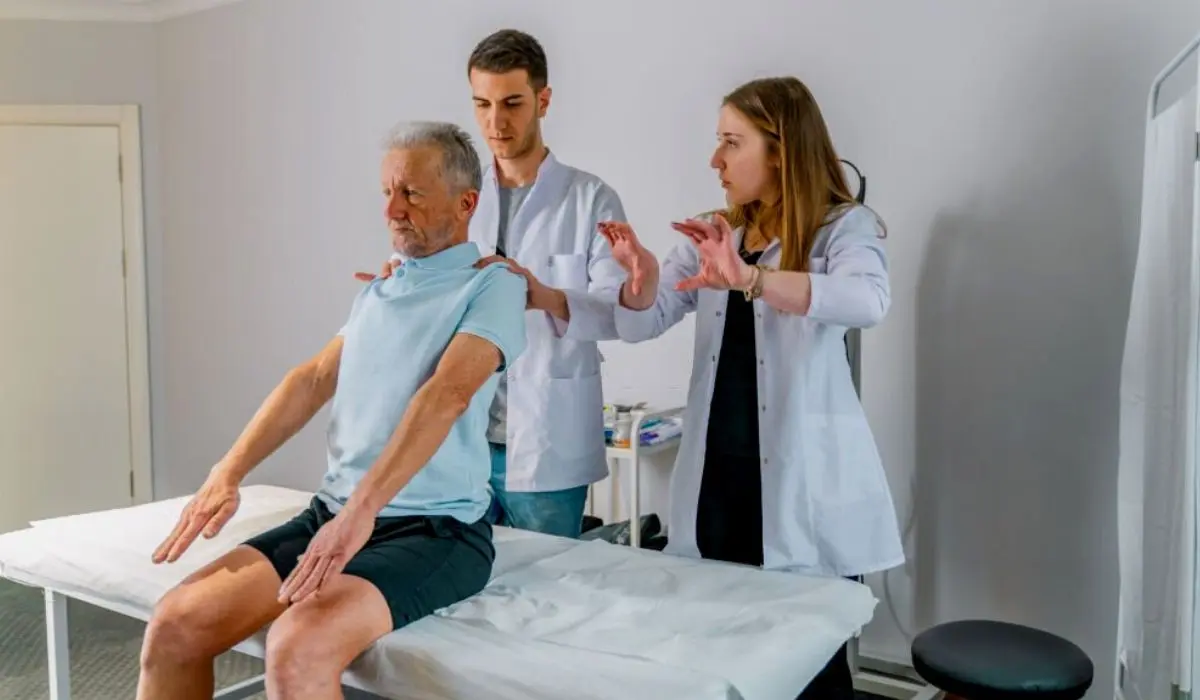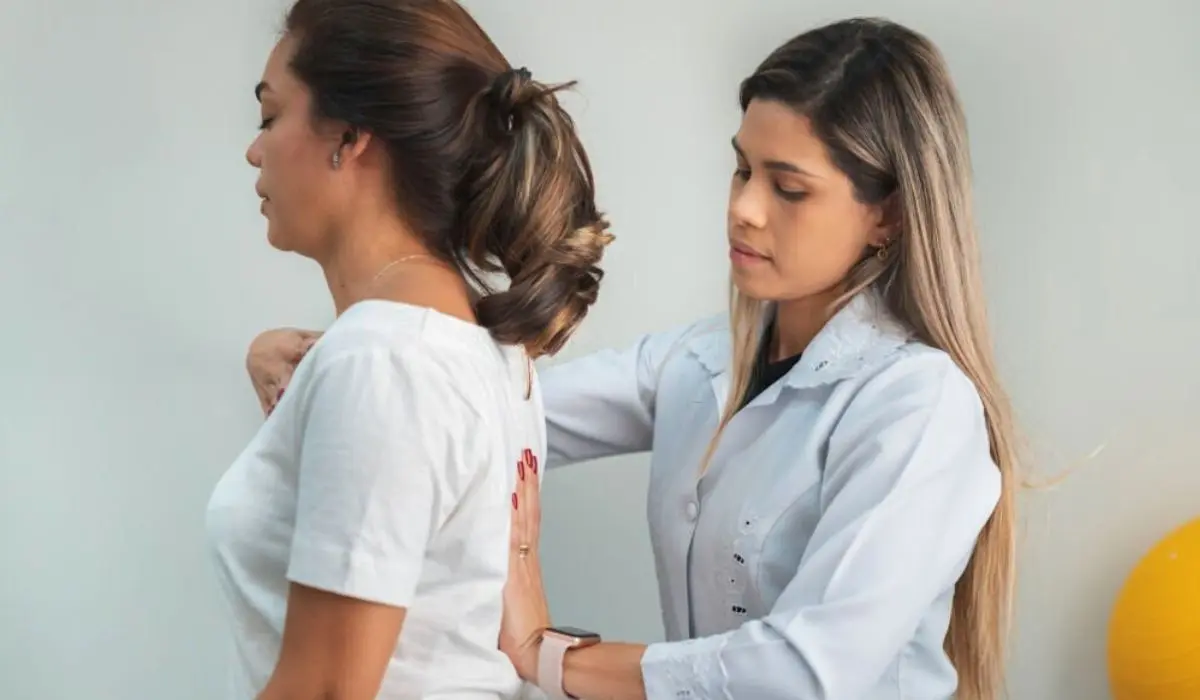Poor posture causes discomfort in many people. You’re not alone. The influence posture has on health is sadly undervalued by most of us. With proper exercises and direction, you can successfully correct your posture and enjoy improved physical well-being. Posture correction is made possible through the ten essential physical therapy methods examined in this article.
Understanding why posture is important first, let’s dive deeper. From confidence to physical fitness, how you hold yourself is important. Keeping your body duly aligned reduces the liability of musculoskeletal issues while contemporaneously offering relief from pain and an increase in tone- -assurance. So, let’s unbend effects out!
What Is Posture?
Sitting, standing, or resting positions define posture. Harmony between bones and muscles should also be a priority when thinking about how you look.
Exploration shows that there’s a strong connection between posture and health.
In terms of overall health, posture plays a pivotal part. Breathing, digestion, and mood may all be affected by it. The body functions at its stylish when good posture is rehearsed, but poor posture leads to multitudinous health problems.

Common Postural Problems
Before we discuss the solutions, let’s identify the most common posture problems people face:
◼ Forward Head Posture: Head-forward movement can result in pain in the neck and upper back.
◼ Rounded Shoulders: Rounded shoulders give rise to shoulder and upper back pain.
◼ Swayback: Comfort in the lower back can suffer due to swayback (lordosis).
◼ Hunched Back: Natural spine curvature alterations might lead to pain issues.
◼ Uneven Hips: Lower back and hip pain can come from an incorrect hip height distribution.
Why Consider Physical Therapy?
Physical remedy is a non-invasive and effective way to address posture issues. It focuses on perfecting your body’s alignment, strength, and inflexibility, helping you stand altitudinous and pain-free.
Top 10 Physical Therapy Exercises For Posture Correction
Now, let’s get to the heart of the matter – the exercises that can help correct your posture:
1. Chin Tucks
This exercise strengthens the muscles at the front of your neck, helping you pull your head back into alignment.
Key Point: While sitting or standing, gently tuck your chin in towards your casket, hold for many seconds, and reprise.
2. Shoulder Blade Squeezes
To counteract rounded shoulders, try this exercise to strengthen your upper back muscles.
Key Point: Sit or stand with your arms at your sides. Squeeze your shoulder blades together, hold for a moment, and release.
3. Wall Angels
Wall angles are a fantastic exercise to improve shoulder mobility and correct hunched posture.
Key Point: Stand with your back against a wall, arms bent at 90 degrees. Slowly raise your arms overhead while keeping them in contact with the wall.
4. Cat-Cow Stretch
This yoga-inspired stretch helps to alleviate tension in your spine and improve flexibility.
Key Point: Get on your hands and knees. Arch your back like a cat and then arch it in the opposite direction, like a cow.
5. Child’s Pose
This relaxing stretch can release tension in your back and neck.
Key Point: Kneel on the floor, sit back on your heels, and reach your arms forward. Hold and breathe deeply.
6. Thoracic Extension
This exercise targets the upper and middle back, promoting better posture.
Key Point: Stand or sit with your hands behind your head. Gently arch your upper back, feeling a stretch.
7. Hip Flexor Stretch
Tight hip flexors can contribute to swayback. Stretch them regularly.
Key Point: Kneel on one knee, with the other foot in front. Lean forward slightly to feel a stretch in the hip.
8. Planks
Strengthen your core to support your spine and maintain an upright posture.
Key Point: Get into a push-up position but with your weight on your forearms. Keep your body in a straight line from head to heels.
9. Bridges
Bridges target the glutes and lower back, helping to correct posture imbalances.
Key Point: On your back, bend those knees! From shoulders to knees, lift your body to create a linear path.
10. Foam Rolling
Especially in the upper back and shoulders, tension can be released by using a foam roller.
Key Point: On your back, bend your knees. From shoulders to knees, create a straight line by lifting your hips off the ground.
Roll the foam roller along your upper back while lying on the ground.
Tips For Maintaining A Good Posture
Remember, posture correction is an ongoing process. Here are some tips to help you maintain good posture in your daily life:
- Be mindful of your posture throughout the day.
- Take breaks and stretch if you have a desk job.
- Use ergonomic furniture and accessories.
- Sleep on a supportive mattress and pillow.
- Stay active and engage in regular exercise.
The Role Of Ergonomics
Ergonomics is the science of designing workspaces to fit the needs of the worker. It plays a crucial role in preventing posture-related issues. Invest in an ergonomic chair and set up your workspace for optimal comfort.
When To Seek Professional Help
They may work, yet exercises and advice could call for qualified help sometimes. Personalized recommendations are offered by these professionals in cases of persistent agony, distress, or underlying medical problems that require treatment plans unique to your situation.
Conclusion
A difference can be noticed by integrating physical therapy routines and good posture practices into daily life. Confidence through better posture means saying goodbye to discomfort.
FAQs
- Will we see improvements in posture quickly?
With consistent effort, visible changes in posture can occur after just a few weeks.
- All ages will find applicable exercises here.
Most of these exercises are suitable for people of all ages. Consultation with a medical specialist prior to embarking on an exercise regimen is essential for seniors.
- Each posture-correcting exercise should be held for how long?
To get comfy with the exercises, aim for repetitions lasting 10–30 seconds, gradually extending the duration as you gain confidence.
- Are home workouts without tools possible for me?
Absolutely! Without specialized tools, all the workouts detailed can be done from the comfort of your own home.
- Starting posture correction activities may leave you feeling uneasy. It is normal.
Normal, especially during the beginning stages, is mild discomfort or muscle soreness. Persistent, severe pain requires consultation with a healthcare professional.
So, there you have it – the top 10 physical therapy exercises for posture correction. Remember, improving your posture is a journey, but with dedication and consistency, you can stand tall and lead a healthier, more comfortable life. Say goodbye to slouching and hello to a confident, pain-free you!
Our recommendations are rooted in genuine belief in the benefits of the products bring to users. When you purchase through our links, we may earn a commission, supporting our testing and development without adding any cost for you. Learn more.

Dr. David G Kiely is a distinguished Medical Reviewer and former General Medicine Consultant with a wealth of experience in the field. Dr. Kiely’s notable career as a General Medicine Consultant highlights his significant contributions to the medical field.


